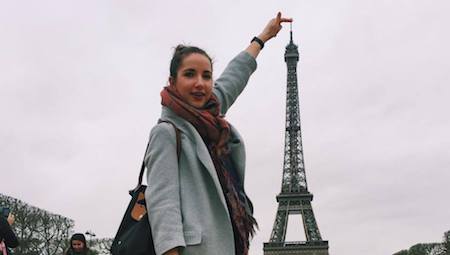The path to my research focus has not been an expected one. It began with a recognition of my interests in culture and politics, and my love for Paris. I love the city’s grittiness, wise fatigue, and shimmers of decadence. It is curious (however anticipated) that Paris is often molded into many monolithic clichés: Marbled museum halls, the City of Light, the City of Love, or simply the home of the seemingly omnipresent Eiffel Tower. Yet, these names and icons do little to truly provide the context and reality of the city.
Thinking anthropologically, I have always been challenged to pursue the under examined complexities of who, what, and where, are not included in neatly packaged discourses and imaginings. When you think about Paris I am almost positive your mind does not jump to images of the banlieues, or suburbs. Over the past sixty years, the suburbs of Paris have become highly stigmatized and politicized. The suburbs are home to a large number of highly modern housing projects built in the sixties and seventies to house the growing population of the city. Over the decades, they became the living places of Paris’s increasingly diverse immigrant population. As the years ticked by, the modernist vision and resources that once poured into the suburbs dried up, and unemployment rose. These suburban spaces became the sites of unrest and discord, simmering under the surface of the city but coming to a boil in 2005 with a massive series of suburban riots. In the wake of the riots France announced a state of emergency and the damage incurred over the following weeks totaled roughly 200 million euros. The riots pointed to deep disparities within Paris, and more broadly, to the distinct fragility of the political belief in a common Frenchness. Today, the suburbs of Paris still seem at odds with the rest of the city. Just two years ago, youth suburban unemployment was over 40 percent, about double the national average.
I began to pursue the idea of common Frenchness, this idea that there was a solid equality provided by nationality. It seemed like unsteady ground when the realities of structural inequalities, exhibited so clearly in the suburbs of Paris, were so clear. Pushing this idea further, I found it difficult to pinpoint exactly what Frenchness meant. Some of the most popular French icons, foods, and styles have been informed, derived, or appropriated from other cultures, places, and peoples. I began to explore the concept of music as a cultural imagining, and this led me to Edith Piaf. Her voice and persona all seem to ooze Frenchness. And yet, her ancestry is Algerian. How was it that the very people denying the label, rights, and equalities of Frenchness to some (those in the suburbs) considered others to possess this Frenchness so unquestioningly? I found this thread of cultural musical narrative to be absolutely fascinating. I rethought my own love for French rap in the context of Frenchness, representation, and suburbs, digging for a connection. For now, my research focuses on how musical expression, namely rap, renders certain populations in Paris visible, and how this music helps the artists and their listeners construct social and political identities within changing landscapes of France and Frenchness.


